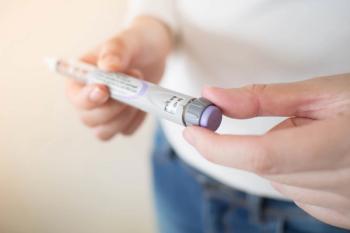
- Drug Topics October 2018
- Volume 162
- Issue 10
What Pharmacists Need to Know About Lofexidine
FDA approves lofexidine for opioid withdrawal symptoms.
The FDA approved lofexidine (Lucemyra, Catalent Pharma Solutions) in May for treatment of opioid withdrawal symptoms in adults. Lofexidine is a selective alpha-2 adrenergic agonist that reduces the release of norepinephrine, which decreases sympathetic tone.1 Reduction in norepinephrine is believed to be key in mitigating symptoms of opioid withdrawal.
Efficacy
The efficacy of lofexidine was evaluated in two phase 3 randomized double-blind placebo-controlled trials of patients meeting DSM-IV criteria for opioid dependence.2,3 In the first phase 3 trial, 602 patients received either lofexidine 2.88 mg total daily dose, 2.16 mg total daily dose, or matching placebo. The coprimary efficacy endpoints were the mean
In the second trial, 264 patients received either lofexidine 2.88 mg total daily dose or matching placebo. The coprimary efficacy endpoints were the mean SOWS-Gossop score on days 1 through 5 on treatment and the proportion of patients who completed five days of therapy. As with the first study, patients on lofexidine were found to have statistical reductions in SOWS-Gossop on days 1 through 5 and a statistically higher proportion of patients retained on therapy at day 5.
A study comparing lofexidine/methadone versus buprenorphine/naloxone in detoxification demonstrated noninferiority of buprenorphine compared to lofexidine.4
Safety
The safety of lofexidine was assessed across three randomized double-blind placebo-controlled trials. The trials enrolled 935 patients on short-acting opioids experiencing withdrawal. The combined dataset presented a similar safety profile and the drug was well tolerated. Adverse reactions that were reported in more than 10% of patients on lofexidine included orthostatic hypotension, bradycardia, dizziness, somnolence, sedation, and dry mouth.1
Geriatric use of lofexidine has not been determined; caution is advised. Safety in pregnant and/or lactating women has not been established.
Dosing
Lofexidine is dosed 0.54 mg orally four times daily with 6 hours between each dose. Subsequent dosing should be guided by symptom presentation and tolerability of side effects. The maximum total daily dosage is 2.88 mg. Lofexidine is administered for the first 5 to 7 days after last use of opioids, and can be continued for up to 14 days.
Dose adjustments are recommended in renal insufficiency. Patients with an eGFR between 30 ml/min/1.73m2 to 89.9 ml/min/1.73m2 should receive 0.54 mg four times daily, a maximum total daily dose of 2.16 mg. Patients with an eGFR <30 ml/min/1.73m2, ESRD, or on dialysis should receive 0.18 mg four times daily, a maximum total daily dose of 0.72 mg.
Dose adjustments are recommended in hepatic insufficiency and are dependent on the Child-Pugh score: Mild (score 5 to 6), give a maximum total daily dose of 2.16 mg; Moderate (score 7 to 9), give a maximum total daily dose of 1.44 mg; Severe (score >9), give a maximum total daily dose of 0.72 mg.
References:
- Lucemyra [package insert] Winchester, KY: Catalent Pharma Solutions; 2018
- ClinicalTrials.gov [Internet]. 2018 February 26. Identified NCT01863186; Efficacy, safety and dose-response study followed by open-label study of lofexidine treatment of opioid withdrawal. Available at:
https://clinicaltrials.gov/ct2/show/NCT01863186 . Accessed on Sept. 6, 2017.
- Gorodetsky CW, et al. A phase III, randomized, multi-center, double blind, placebo controlled study of the safety and efficacy of lofexidine for relief of symptoms in individuals undergoing inpatient opioid withdrawal. Drug Alcohol Depend. 2017 Jul 1;176:79-88. doi:
10.1016/j.drugalcdep.2017.02.020
- Law FD, et al. Buprenorphine/naloxone versus methadone and lofexidine in community stabilization and detoxification: A randomized controlled trial of low dose short-term opiate-dependent individuals. J Psychopharmacol. 2017;1046-1055. doi:
10.1177/0269881117711710
Articles in this issue
almost 7 years ago
Lower Drug Prices Aren’t Worth Higher Health Risksabout 7 years ago
How to Talk About Being a Pharmacistabout 7 years ago
What it’s Like to Be an Oncology Pharmacistabout 7 years ago
The 4 Tech Advances Benefitting Pharmacies and Patientsabout 7 years ago
How Mergers Will Affect Pharmacistsabout 7 years ago
Negotiating Better Hours: A Guide for Pharmacistsabout 7 years ago
How to Create the Job You Wantabout 7 years ago
More Pharmacists Move into Medical Practices, More Doctors See Valueabout 7 years ago
Top 5 Ways to Make Vaccinations Less Frustratingabout 7 years ago
The 4 Keys to Medication AdherenceNewsletter
Pharmacy practice is always changing. Stay ahead of the curve with the Drug Topics newsletter and get the latest drug information, industry trends, and patient care tips.























































































































